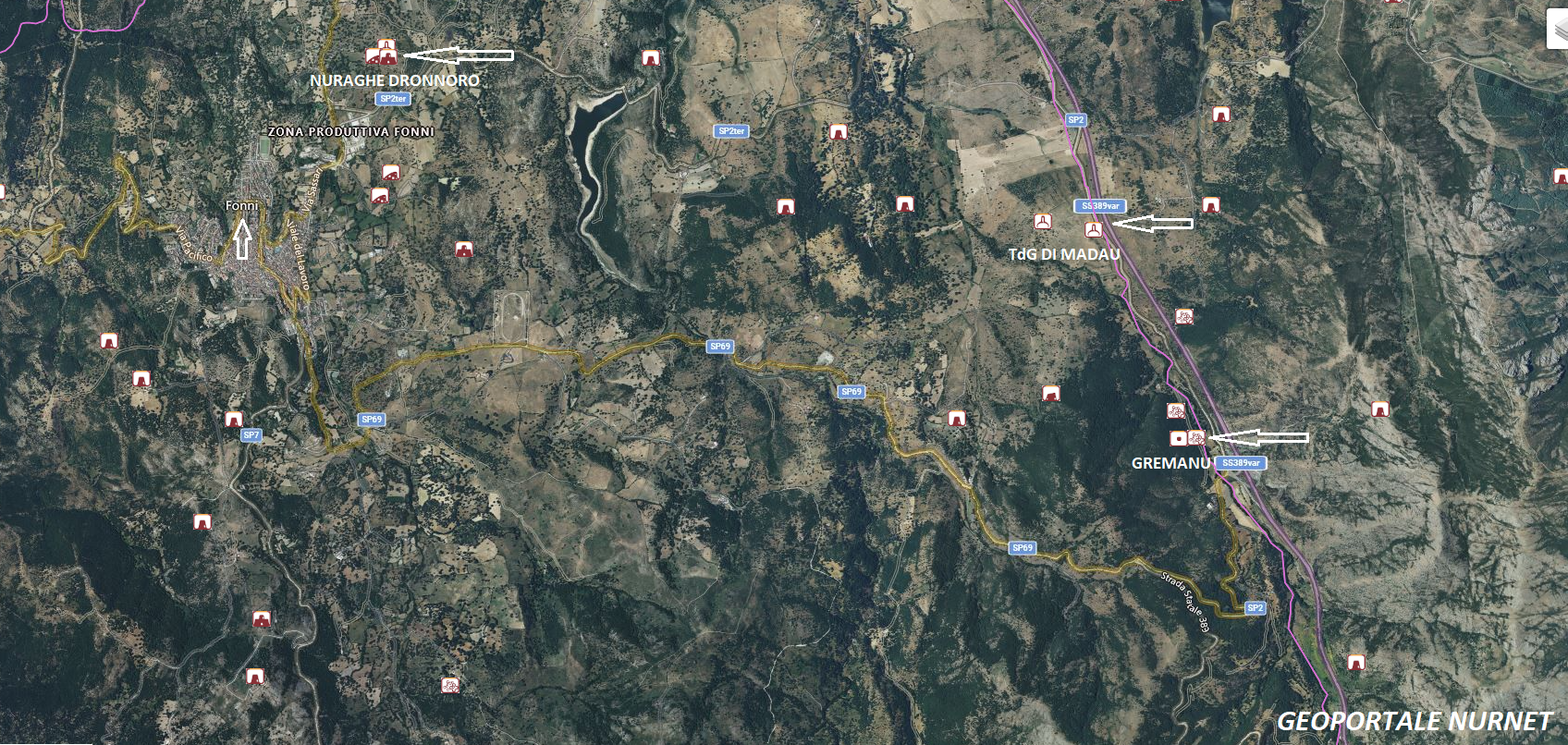It is certainly not easy to list, even briefly, the archaeological testimonies of the territory of Fonni.
The area of “Gremanu” is an extraordinary example of a Nuragic sanctuary composed of three temple structures that presents, among other things, to put it in the words of archaeologist Maria Ausilia Fadda, “the only known example of a Nuragic aqueduct and a type of religious architecture hitherto unknown, built in the foothills of the site, in a clearing that stretches along the two banks of the Gremanu river.”
A semicircular “tèmenos,” included within the sanctuary, delineates the area designated for “religious rites in honor of the water deities.”
The four giant tombs of “Madau” are another “unicum” characterized by an “amphitheater” arrangement, with the respective exedrae facing towards the pass of “Corr’e Boi” (so named for its “bull’s horn” profile), presumably a metaphor for the recurring concepts of fertility and sexual power, typical of those times and further highlighted in the plan, with its evident phallic profile, of the aforementioned sanctuary of “Gremanu.”
However, it is the density of the nuraghi and other characteristic elements of the Bronze Age and final Neolithic present in the territory that leaves us astonished.
At a visual distance from the town of Fonni, the archaeological area of “Dronnoro” houses, in addition to a giant tomb (unfortunately in poor condition) and a small funerary structure from the Neolithic age, the nuraghe of the same name, originally a single tower and later integrated with two smaller towers.
The complex, in good condition, must have played a fundamental role in a distant past within the territorial compendium of Fonni and represented a reference for the numerous other similar structures, many of which were built, according to a rather common practice, to guard the waterways.
Attached: The Nuragic sanctuary of Gremanu (ph. Andrea Mura-Nuragando Sardegna); the giant tombs of Madau (ph. ArcheoUri Vagando, Lucia Corda and Sergio Melis); the nuraghe Dronnoro (ph. Gianni Sirigu and Bibi Pinna).











